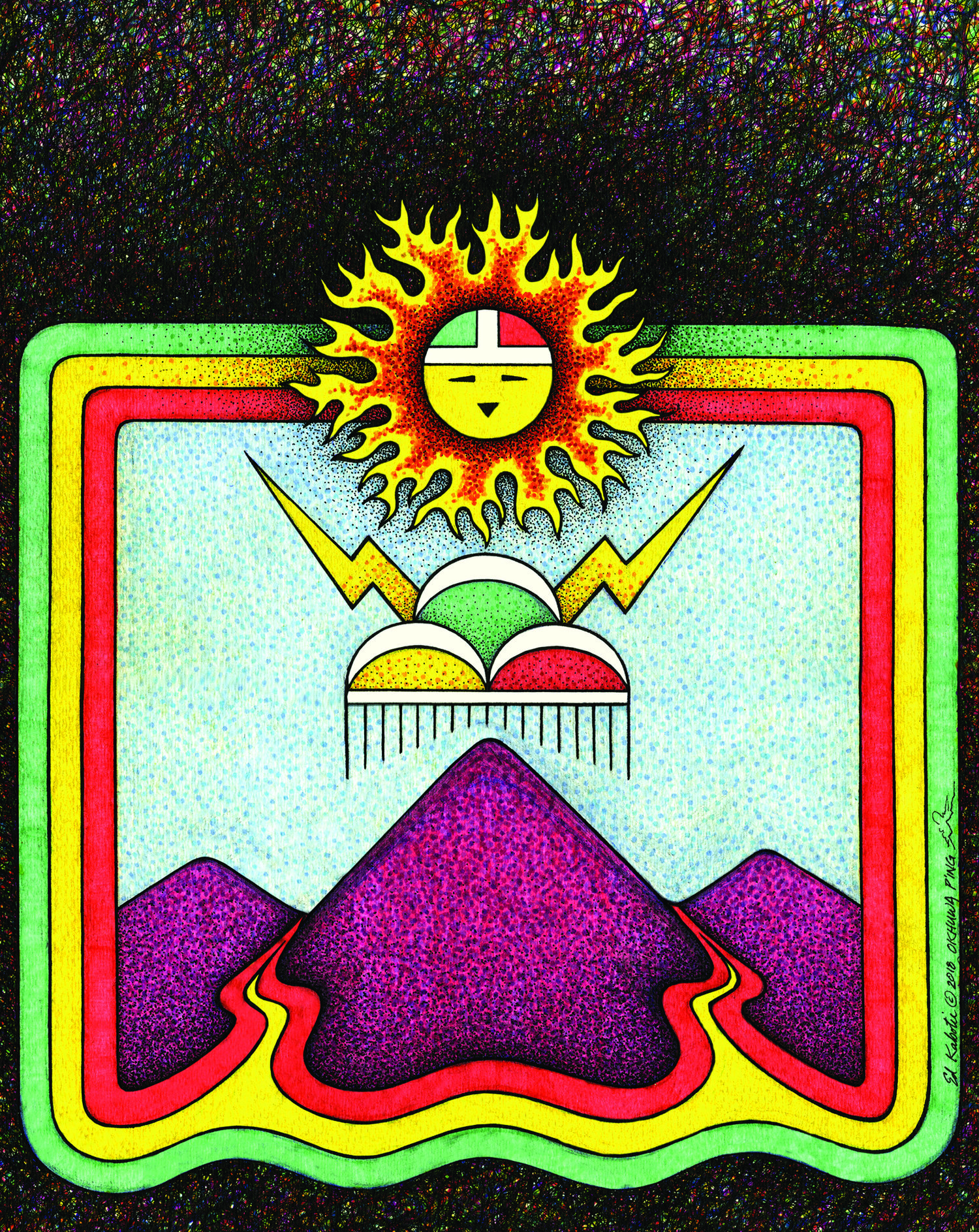Thunder River
Thunder River is the second largest spring on the North Rim of Grand Canyon—the largest being Tapeats Spring. An extraordinarily beautiful 2 ½ mile trail up Tapeats Creek from River Mile 134.5R passes through many geologic layers into the Muav Limestone, from which Thunder River emerges.
Thunder River is the classic gushet springs ecosystem of the Southwest. Its water emerges from a deeply incised karst aquifer system in the Redwall Limestone. Thunder River’s water is 50° to 52°F (10-12°C), anomalously cold for a desert springs ecosystem but consistent with water temperatures of the high elevation sources from which it is presumably derived. As with most karst systems in arid climates, its flows vary dramatically among seasons and years: wet winters and subsequent snowmelt result in rapid flow through fractures and conduits. Springtime flows from Thunder River and Tapeats Springs may be so high that crossing the creek downstream of the confluence can be quite dangerous in May and June. Flows decrease into the summer and fall months[JDL2] .
Thunder River’s water is dolomitic, with carbonate-rich geochemistry that is approximately equal in calcium and magnesium concentrations, and with little sulfate, chloride, silica, and sodium. Its water is chemically comparable with that of Vaseys Paradise, Roaring, Shinumo Creek, Tapeats, and Deer Springs—all of which are cool, dolomitic springs. Thunder River’s water is dilute compared to most Grand Canyon springs, and has only about half the mineral content of the mainstream Colorado River. The springs’ low mineral concentration reflects a short groundwater residence time, which is further supported by the high variation in seasonal flow. Even though Thunder River emerges on a strongly south-facing aspect, it is protected from summer heat by its cold water, dense cover of riparian trees, and moderate elevation.
Part of the magic of Thunder River is the rich array of plant and animal species that live there. In part this is due to the relatively large size (several acres) of the springs complex: larger springs support more species. But part of the biological intrigue is also the geomorphic complexity of the site. Thunder River Springs supports nearly a dozen distinct microhabitats, each supporting discrete groups of plant and animal species. These microhabitats include: the cave mouth, flowing sheets of white water (madicolous habitat), one of the few more-or-less permanent waterfall spray zones in the Southwest, plunge pools, fast and slower flowing runout channels, the mysterious hyporheic zone in the gravels beneath the stream channel floor, wetland-riparian terraces, dry and wet backwalls, and adjacent cliffs and colluvial slopes.
This great diversity of microhabitats supports more than 36 plant species, with at least 29 native species. Mosses persist in the cave mouth, and are common in the madicolous zones, along with a remarkable assemblage of invertebrates. The stream supports large stoneflies and rare riffle beetles, while wet backwalls support crimson monkeyflower, maidenhair fern, and other wetland and riparian plant species. The steep stream channel torrents support profuse riparian Salix willows, sedges, and seepwillows. Most conspicuously, the adjacent colluvial slopes support a magnificent, perched gallery forest of Fremont cottonwood, with an understory of monkeyflower and white sumac, a species of potential concern for the Park.
The faunal life at Thunder River tends to be secretive or dwells in habitats that are difficult to access. With 12 extant species, Thunder River supports the highest concentration of native landsnail species of any place in the Inner Canyon. In addition, it is a fossil locality for Pleistocene Oreohelix landsnails. Although none of these landsnails are endemic (unique) to these springs, their presence reveals a story of how, as ice age climates became warmer and drier, North Rim forest fauna was been able to survive in the Inner Canyon at protected, well-watered cool springs refugia. Truly, Thunder River is an ecosystem with substantial history and unusual species.
One biogeographic enigma of Grand Canyon has to do with its role as a corridor of habitat between the Mojave Desert and the Four Corners region. As a long, skinny, winding strip of habitat, Grand Canyon connects the deserts to the west of Grand Canyon with the Lake Powell and Four Corners landscapes, allowing species like blackbrush to colonize from west to east. Other, less well-known species have colonized through that corridor as well, one example being the Mohave giant tiger beetle (Amblycheila schwarzi). This species was known from only two specimens in the eastern basin of Grand Canyon until Larry Stevens visited Thunder River at night during the monsoon season. There, he found this unique beetle in good abundance, yet another example of a rare, strange life form that prospers at Canyon springs.
